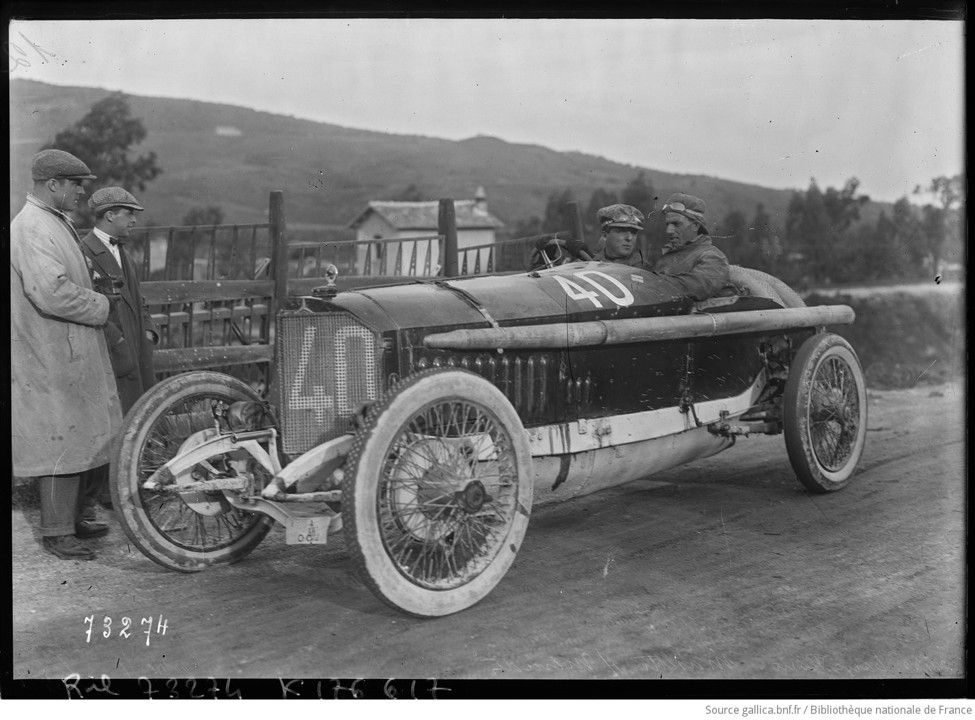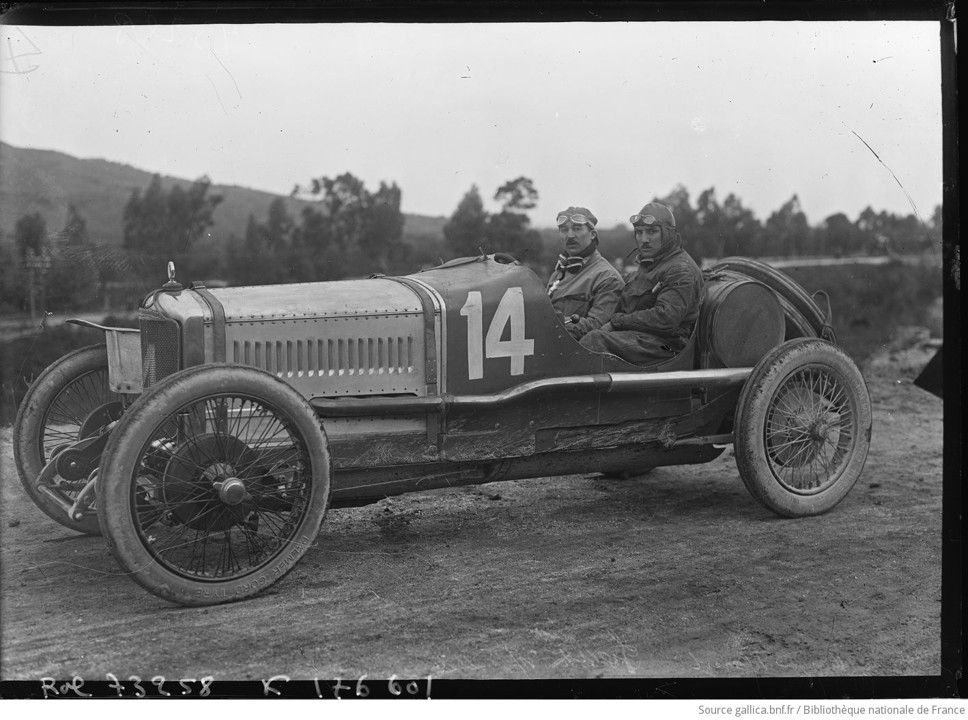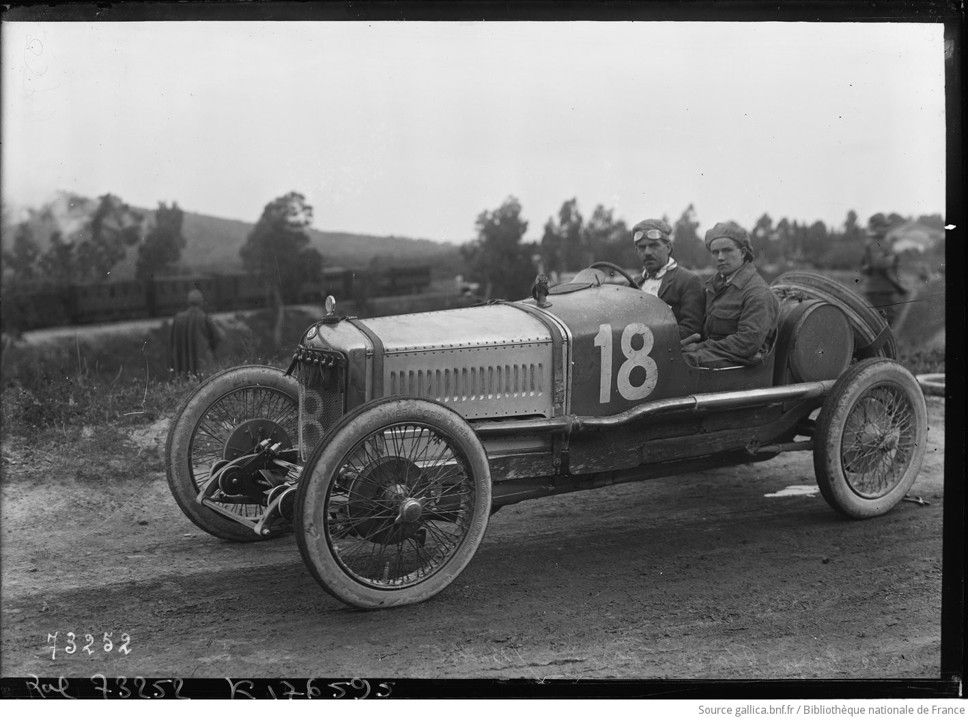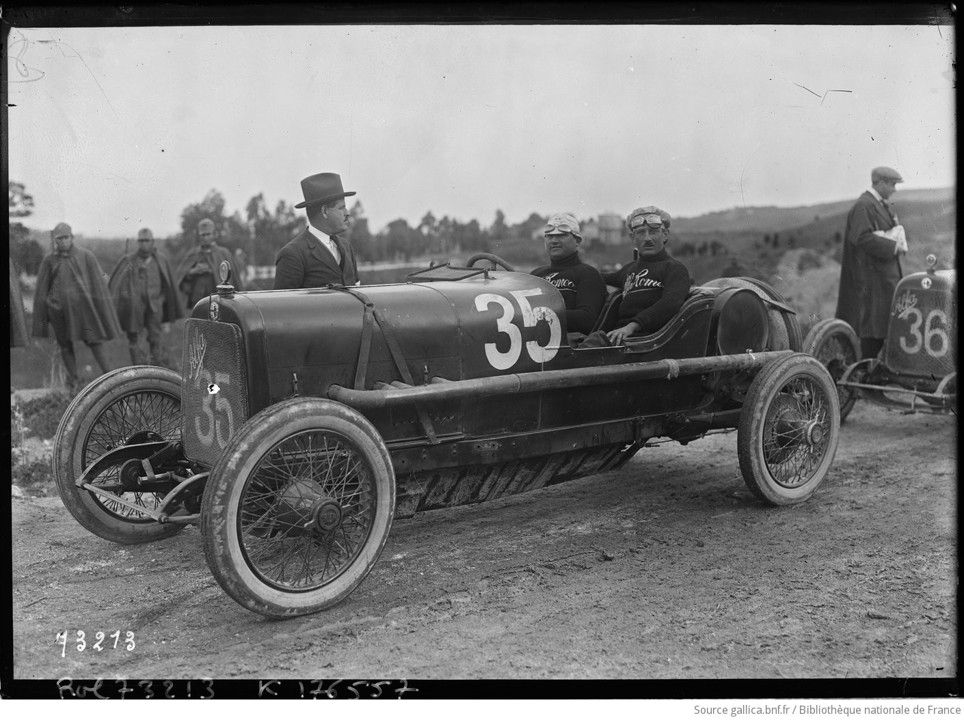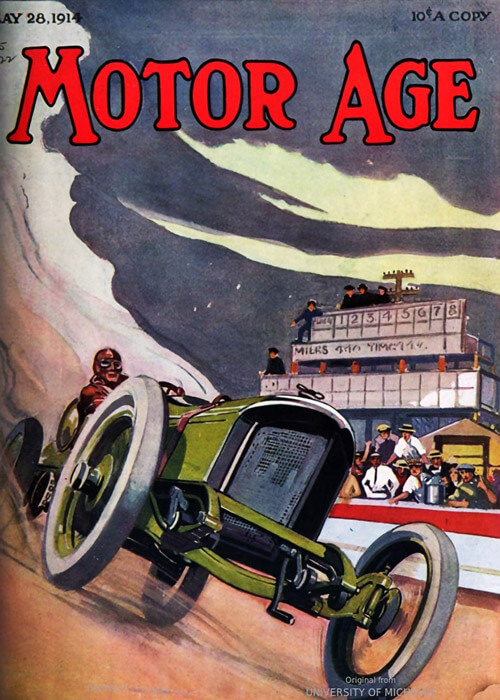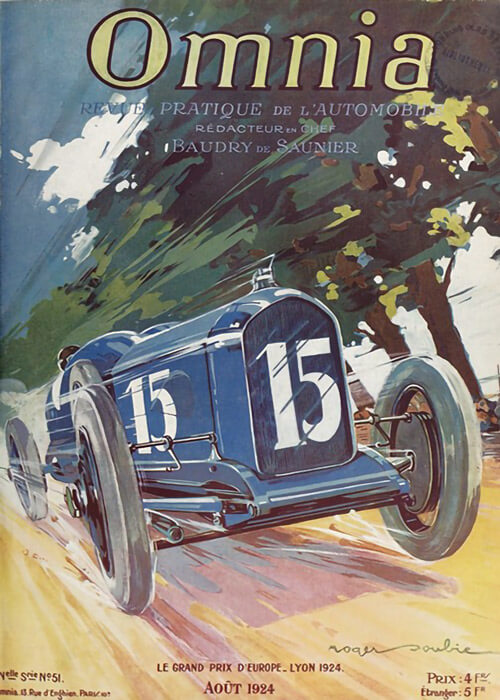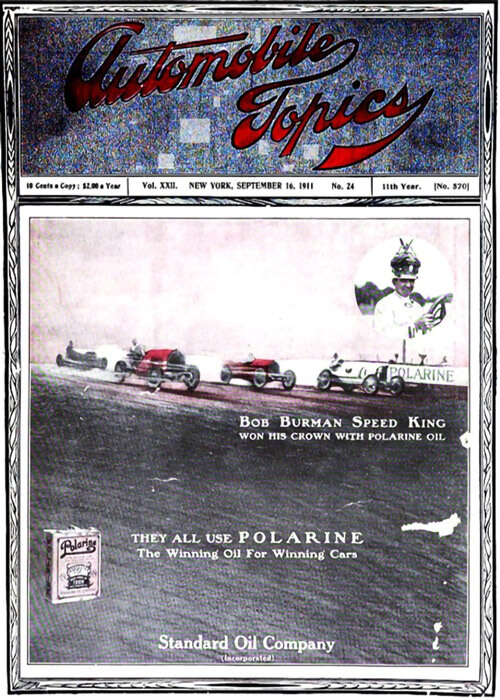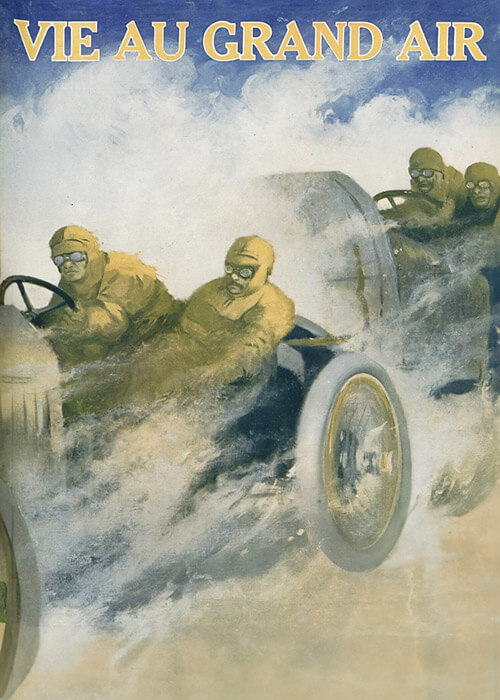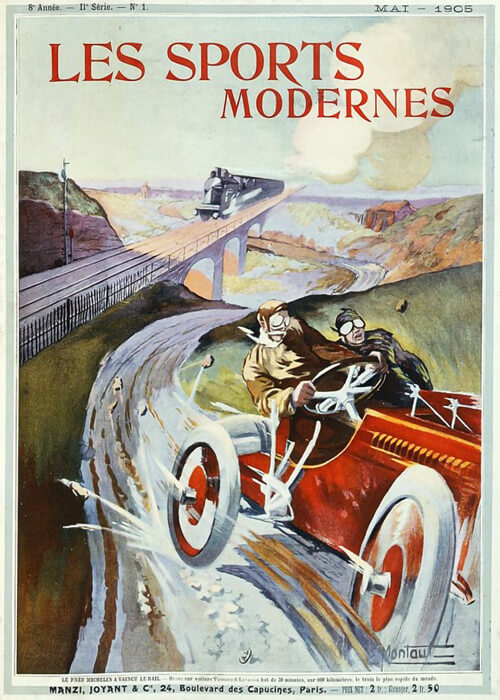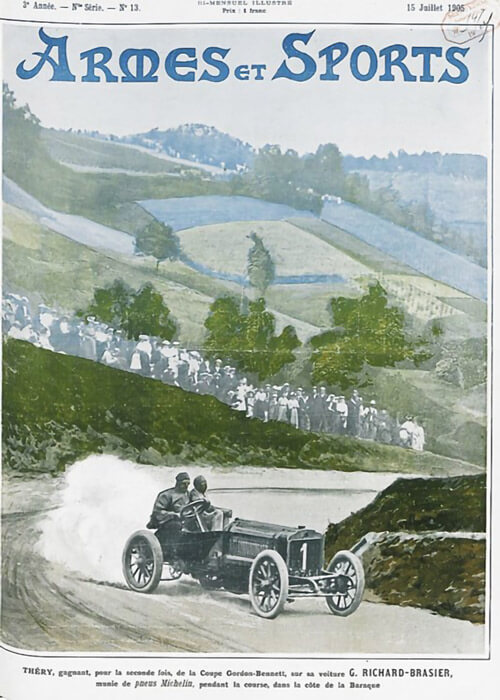This 1922 Targa Florio saw the ever first supercharged engine (in a Mercedes) in a European race. The German manufacturer really was serious about this year’s Targa; he sent six factory cars in the race, of which four were turbocharged. Masetti won again like last year, but now in his own red colored (normal aspirated) Mercedes. Jules Goux finished second, Foresti third and Ascari fourth. The supercharged cars were however no real threat to the first five finishers. It was said, that dust and stones from the roads influenced these turbochargers. In all though, this first race was a promising test for turbochagers.
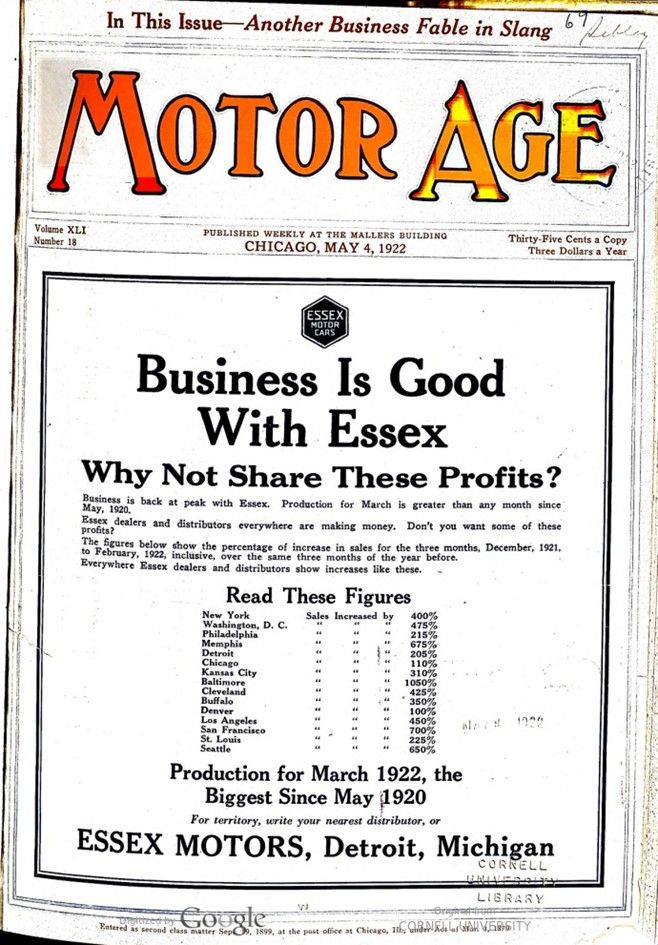
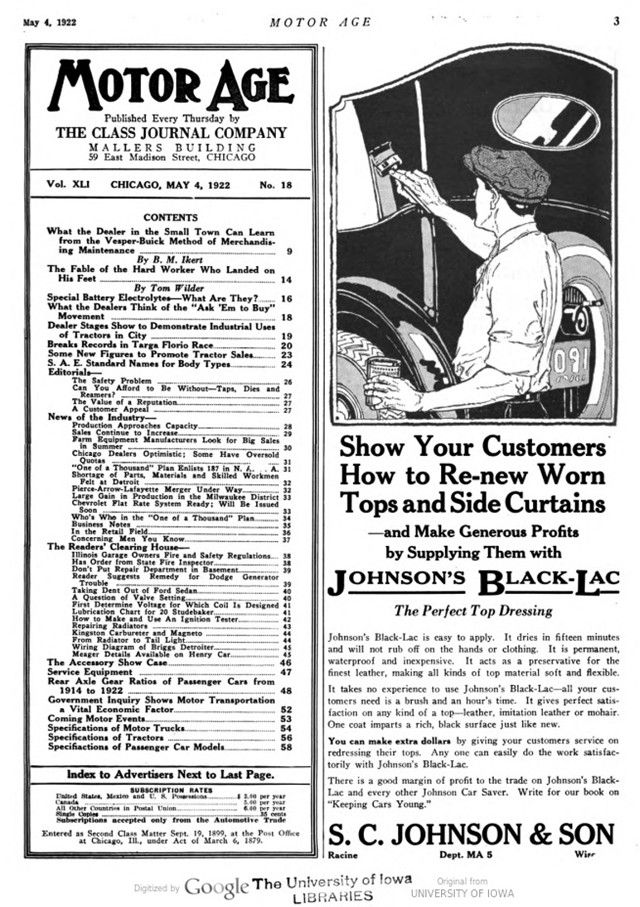
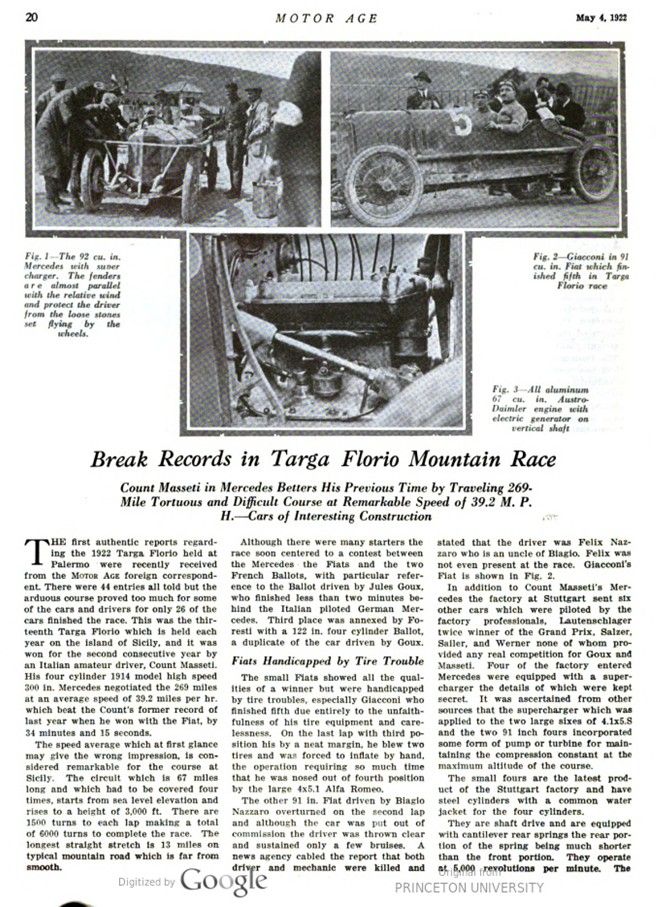
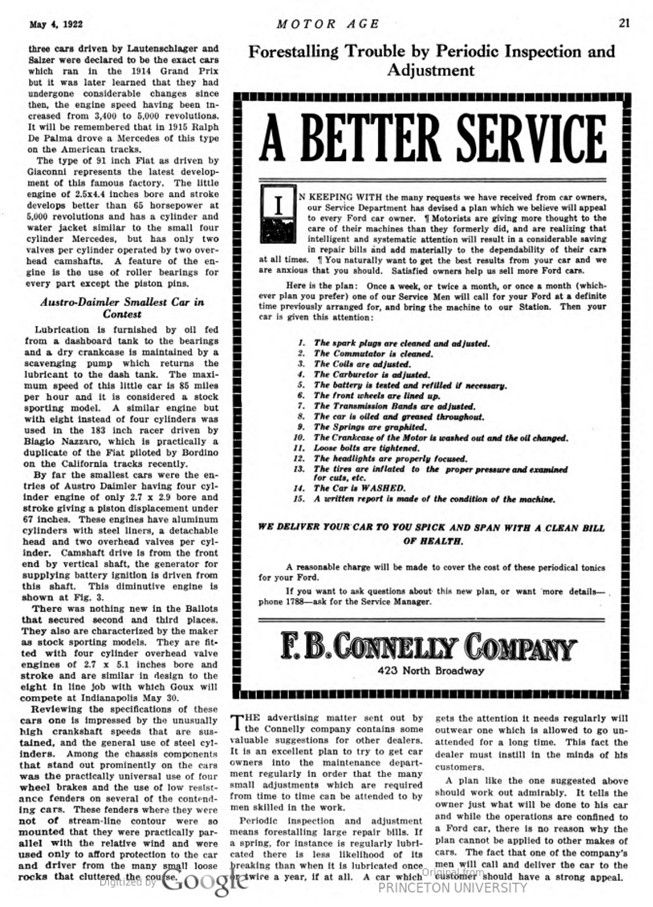
Text and jpegs by courtesy of hathitrust.org www.hathitrust.org, compiled by motorracinghistory.com
MOTOR AGE Vol. XLI, No. 18, May 4, 1922
Break Records in Targa Florio Mountain Race
Count Masseti in Mercedes Betters His Previous Time by Traveling 269-Mile Tortuous and Difficult Course at Remarkable Speed of 39.2 M.P.H.
Cars of Interesting Construction
THE first authentic reports regarding the 1922 Targa Florio held at Palermo were recently received from the MOTOR AGE foreign correspondent. There were 44 entries all told but the arduous course proved too much for some of the cars and drivers for only 26 of the cars finished the race. This was the thirteenth Targa Florio which is held each year on the island of Sicily, and it was won for the second consecutive year by an Italian amateur driver, Count Masseti. His four-cylinder 1914 model high speed 300 in. Mercedes negotiated the 269 miles at an average speed of 39.2 miles per hr. which beat the Count’s former record of last year when he won with the Fiat, by 34 minutes and 15 seconds.
The speed average which at first glance may give the wrong impression, is considered remarkable for the course at Sicily. The circuit which is 67 miles long and which had to be covered four times, starts from sea level elevation and rises to a height of 3,000 ft. There are 1500 turns to each lap making a total of 6000 turns to complete the race. The longest straight stretch is 13 miles on typical mountain road which is far from smooth.
Although there were many starters the race soon centered to a contest between the Mercedes, the Fiats and the two French Ballots, with particular reference to the Ballot driven by Jules Goux, who finished less than two minutes behind the Italian piloted German Mercedes. Third place was annexed by Foresti with a 122 in. four-cylinder Ballot, a duplicate of the car driven by Goux.
Fiats Handicapped by Tire Trouble
The small Fiats showed all the qualities of a winner but were handicapped by tire troubles, especially Giacconi who finished fifth due entirely to the unfaithfulness of his tire equipment and carelessness. On the last lap with third position his by a neat margin, he blew two tires and was forced to inflate by hand, the operation requiring so much time that he was nosed out of fourth position by the large 4×5.1 Alfa Romeo.
The other 91 in. Fiat driven by Biagio Nazzaro overturned on the second lap and although the car was put out of commission the driver was thrown clear and sustained only a few bruises. A news agency cabled the report that both driver and mechanic were killed and stated that the driver was Felix Nazzaro who is an uncle of Biagio. Felix was not even present at the race. Giacconi’s Fiat is shown in Fig. 2.
In addition to Count Masseti’s Mercedes the factory at Stuttgart sent six other cars which were piloted by the factory professionals, Lautenschlager twice winner of the Grand Prix, Salzer, Sailer, and Werner none of whom provided any real competition for Goux and Masseti. Four of the factory entered Mercedes were equipped with a supercharger the details of which were kept secret. It was ascertained from other sources that the supercharger which was applied to the two large sixes of 4.1×5.8 and the two 91-inch fours incorporated some form of pump or turbine for maintaining the compression constant at the maximum altitude of the course.
The small fours are the latest product of the Stuttgart factory and have steel cylinders with a common water jacket for the four cylinders.
They are shaft drive and are equipped with cantilever rear springs the rear portion of the spring being much shorter than the front portion. They operate at 5,000 revolutions per minute. The three cars driven by Lautenschlager and Salzer were declared to be the exact cars which ran in the 1914 Grand Prix, but it was later learned that they had undergone considerable changes since then, the engine speed having been increased from 3,400 to 5,000 revolutions. It will be remembered that in 1915 Ralph De Palma drove a Mercedes of this type on the American tracks.
The type of 91-inch Fiat as driven by Giaconni represents the latest development of this famous factory. The little engine of 2.5×4.4 inches bore, and stroke develops better than 65 horsepower at 5,000 revolutions and has a cylinder and water jacket similar to the small four-cylinder Mercedes but has only two valves per cylinder operated by two overhead camshafts. A feature of the engine is the use of roller bearings for every part except the piston pins.
Austro-Daimler Smallest Car in Contest
Lubrication is furnished by oil fed from a dashboard tank to the bearings and a dry crankcase is maintained by a scavenging pump which returns the lubricant to the dash tank. The maximum speed of this little car is 85 miles per hour, and it is considered a stock sporting model. A similar engine but with eight instead of four cylinders was used in the 183-inch racer driven by Biagio Nazzaro, which is practically a duplicate of the Fiat piloted by Bordino on the California tracks recently.
By far the smallest cars were the entries of Austro Daimler having four-cylinder engine of only 2.7 x 2.9 bore and stroke giving a piston displacement under 67 inches. These engines have aluminum cylinders with steel liners, a detachable head and two overhead valves per cylinder. Camshaft drive is from the front end by vertical shaft, the generator for supplying battery ignition is driven from this shaft. This diminutive engine is shown at Fig. 3.
There was nothing new in the Ballots that secured second and third places. They also are characterized by the maker as stock sporting models. They are fitted with four-cylinder overhead valve engines of 2.7 x 5.1 inches bore and stroke and are similar in design to the eight in line job with which Goux will compete at Indianapolis May 30.
Reviewing the specifications of these cars one is impressed by the unusually high crankshaft speeds that are sustained, and the general use of steel cylinders. Among the chassis components that stand out prominently on the cars was the practically universal use of four-wheel brakes and the use of low resistance fenders on several of the contending cars. These fenders where they were not of stream-line contour were SO mounted that they were practically parallel with the relative wind and were used only to afford protection to the car and driver from the many small loose rocks that cluttered the course.
Fotos.
Fig. 1 – The 92 cu. in. Mercedes with super charger. The fenders are almost parallel with the relative wind and protect the driver from the loose stones flying by the wheels.
Fig. 2 –- Giacconi in 91 cu. in. Fiat which finished fifth in Targa Florio race.
Fig. 3 – All aluminum 67 cu. in. Austro-Daimler engine with electric generator on vertical shaft.
(These foto numbers refer to those in the article and not to the additional pictures, showed here below.)
